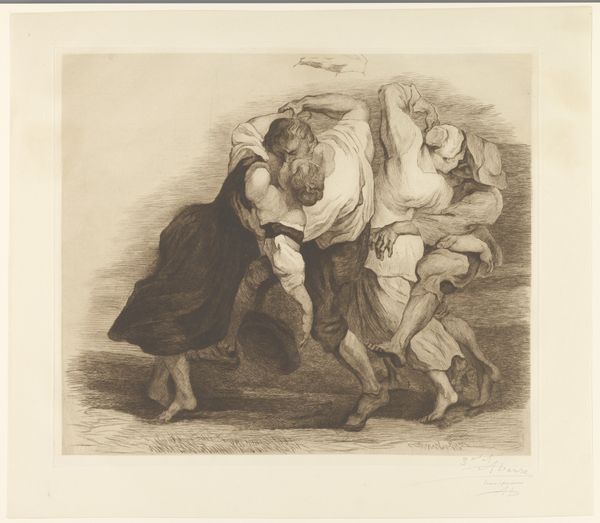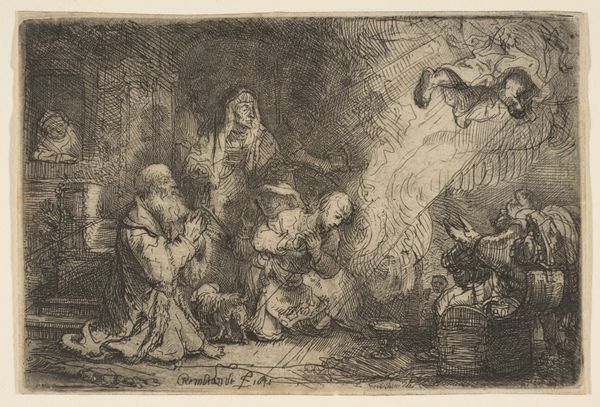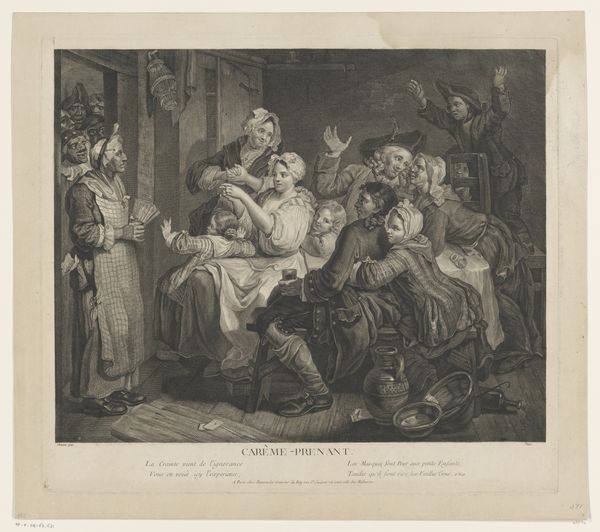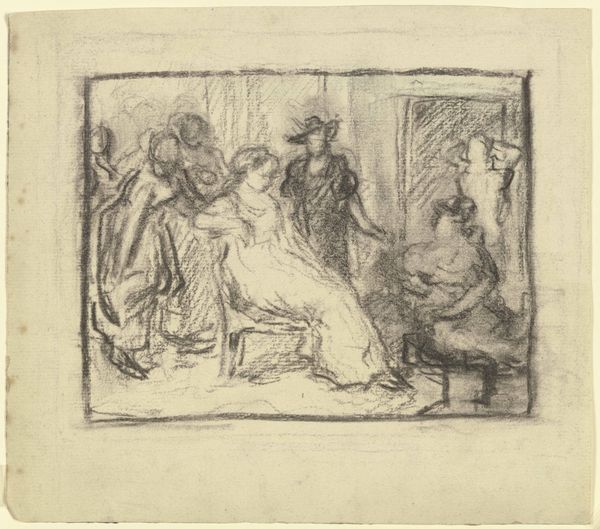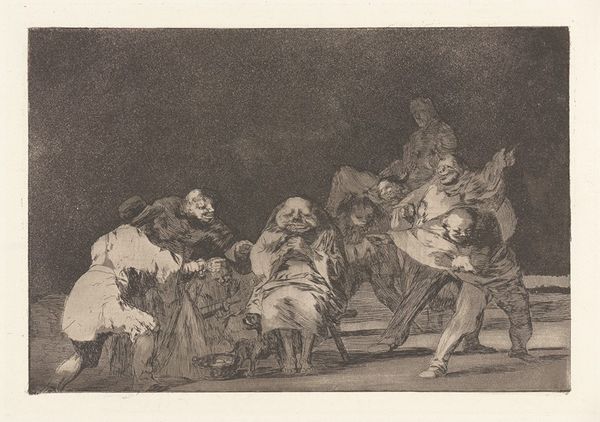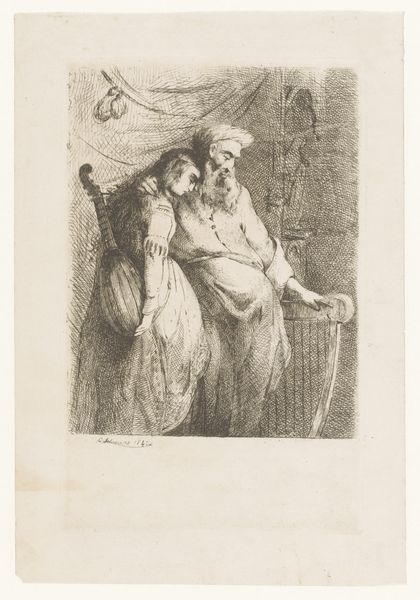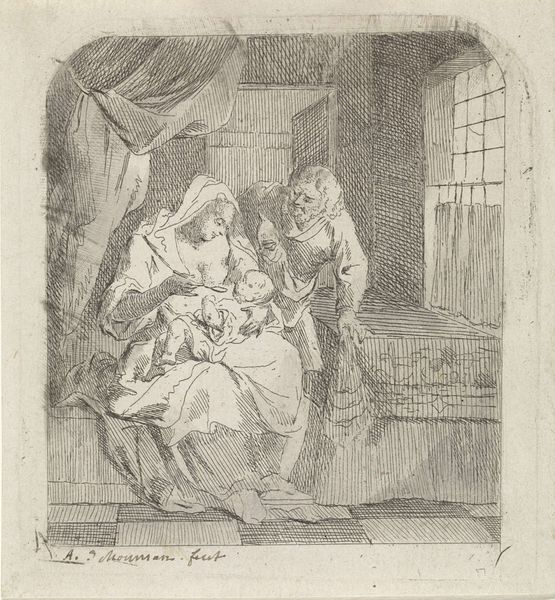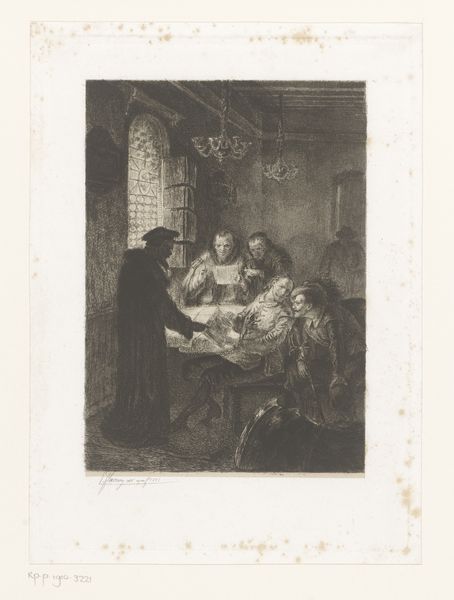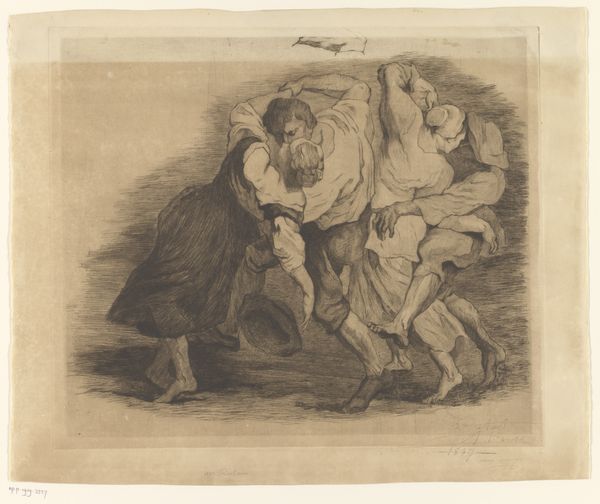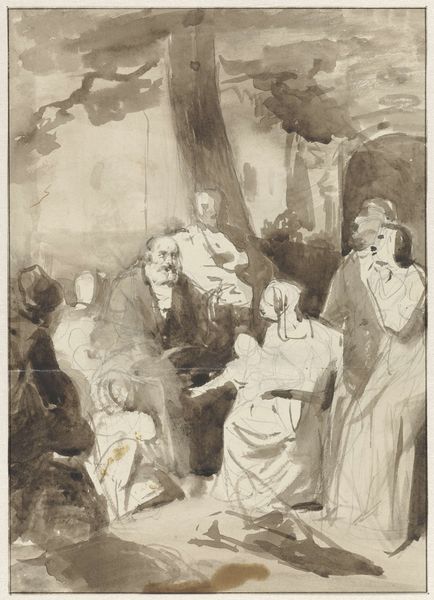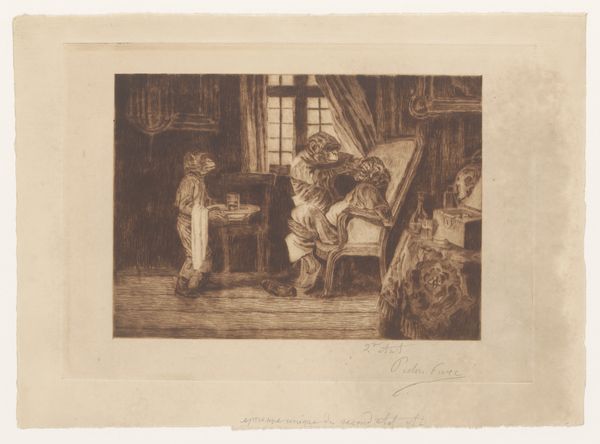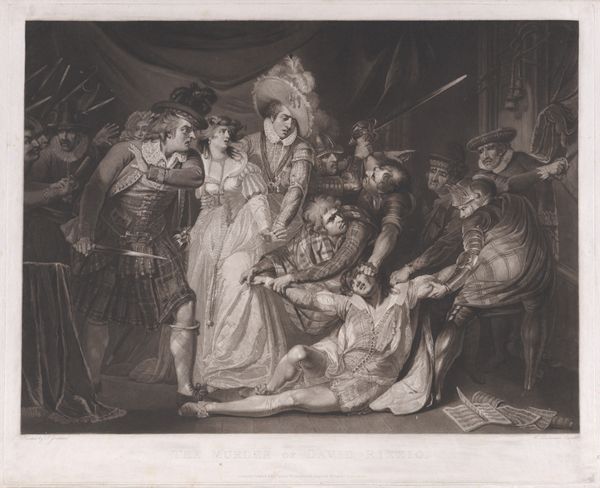
Dimensions: height 484 mm, width 664 mm
Copyright: Rijks Museum: Open Domain
Editor: So, here we have Charles Rochussen’s pencil drawing, "Scène uit toneeldrama Marie Antoinette," created between 1865 and 1868. It’s currently housed here at the Rijksmuseum. I'm immediately struck by the chaotic arrangement of figures. How would you interpret the composition of this piece? Curator: Formally, we observe a dynamic interplay of light and shadow achieved through the delicate graphite medium. Note the artist's deliberate use of hatching and cross-hatching to create tonal variations and textures, especially visible in the drapery and the rendering of the figures' emotions. The arrangement, though seemingly disorganized, contributes to an overall sense of dramatic tension. How does the scale contribute to the artwork's intrinsic value? Editor: It's interesting to consider that scale does influence impact, but I don’t see how it contributes to its “intrinsic” value. Is it the technical execution or visual arrangement, or something else that stands out to you in terms of “intrinsic” artistic worth? Curator: The intrinsic qualities, precisely. Observe how the artist manipulates the graphite medium to portray varying degrees of emotional intensity – from the pronounced grief in the foreground to the distant, ghostly apparition. It is through the close analysis of these formal properties – the use of line, tone, and texture – that the drawing generates such dramatic tension in absence of color, while portraying Marie Antoinette and her cadre's tragedy. Does the technical precision in this artwork impress you, regardless of theme or cultural context? Editor: Absolutely. I see how focusing on those techniques provides a framework to consider it objectively. It's not just a historical scene, but a study in emotion communicated through skillful use of a pencil! Curator: Precisely! Shifting our focus from mere representation to the very language the artist uses – line, form, texture – unlocks a deeper appreciation for the artwork's intrinsic structure, enriching our formal, structured response.
Comments
No comments
Be the first to comment and join the conversation on the ultimate creative platform.
